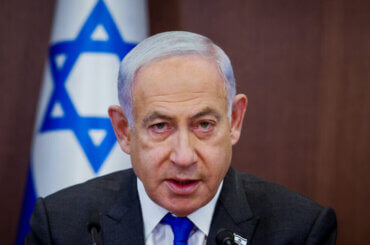
Have you ever visited the Holy Land? No? But most likely you traveled to other places in the world as a tourist.
In Jerusalem you can find more than three million tourists every year, taking pictures of the Dome of the Rock, the Western Wall, the Church of the Holy Sepulcher and wandering around the markets of the Old City buying jewelery, clothes, crucifixes and hookahs from the friendly Arab owners.
Tariq is the fourth generation of his family who runs a shop that was established in the 1950s close to Jaffa Gate. When I meet him first he is talking to Yana, a young woman from Moscow who comes to Jerusalem once a year and gives Tariq a visit. She brought two friends who are looking for skirts in his shop.
Right away Tariq starts making jokes with them and shows them more of the clothes he keeps in the back of his shop.
After a couple of more costumers, he tells me that his job isn’t tiring in his muscles from hard physical work, but it becomes more tiring inside his head. One of his brothers owns a Pizza restaurant on Salah Al-Din Street. The profit of both shops are enough to feed both of their families as well as their father Ahmad who is taking a nap in one of the backrooms.
Tariq works seven days a week. Before, he worked as a waiter and at a cigarettes company, but his family needed someone taking care of their shop.
“It’s always the same – day in, day out – tourists walk by, bargain, buy and leave. Even the difficulties for us as Palestinians in this country stay the same since decades.”
I’m wondering if tourists ever ask something about the conflict, why there is an Israeli flag in every tiny corner of the city, but not a single Palestinian one… Tariq doesn’t really need time to think about my question. He immediately replies: “Nobody ever asked anything about the conflict, our situation here. They don’t care.” And most probably, they don’t want to concern themselves in their holidays with politics.
Most of the Arabs living in Jerusalem own a so-called Jerusalem ID/ Blue ID which forbids them to elect candidates for the Knesset, the Israeli Parliament, and can be taken away easily by the Israeli state. Tariq applied several times for an Israeli passport to have the same rights as every Jewish citizen of Israel. Without success.
In the past years his family has been put under additional pressure to sell their house in the Old City, which is common for the Israeli open check policy in East Jerusalem. “Tell us a price for your shop and we’re gonna buy it. One million, two million shekel?” More than four, five times they were asked to sell their houses to Jewish Israelis, which is widely known as part of the Judaization Plan of East Jerusalem.
A tour guide with a group of tourists stops in front of Tariq’s shop, talking about the “Reunification of Jerusalem” in the Six-Day War 1967, in which Israel occupied the West Bank, East Jerusalem, the Gaza Strip, the Syrian Golan Heights and the Egyptian Sinai Peninsula. In contrast to what the mainly Israeli guides tell the tourists, 1967 is internationally not regarded as reunification, but an annexation of the East of the city that contradicts international law and that is associated with the forced displacement of several thousand Palestinians. In addition, although you find the Israeli Knesset here, no country in the world – except for Israel itself – recognizes Jerusalem as Israel’s capital.
Approached on that subject, Tariq’s comment is sobering and understandable all at once: “They tell the tourists whatever they want. They spread whatever is in their interest.”
After spending a year in the West Bank and witnessing the daily humiliation of Palestinians at checkpoints by soldiers or at several occasions all over the Occupied Territories by settlers, the most difficult experience have been interviews in East Jerusalem, getting a glimpse behind the mask of the city and its colorful and lively hustle.
Around 7:30 Tariq starts packing up the scarfs and jewelry from outside. The sun starts going down slowly and the flow of tourists decreases. For Tariq another day under Israeli occupation goes by. An occupation from which the visitors from all over the world see woefully little.


The Jerusalem ID does not “forbid” anything at all, in reality if you wish to vote in a national election then you should be a citizen of that nation – a nearly universal truth.
He should have applied for Israeli citizenship instead of an Israeli passport.
Sad.
Good, revealing article.
There’s lots of misinformation on the internet regarding Israel as the capital of Israel. Some of it is very sly.
I’m worried that after this story, the authorities will show up at the shop with some permit that isn’t being obeyed to the letter and goodbye Tariq.